Leaving St Vincent Place we headed north along Montague Street, then turned right into Bank Street towards South Melbourne, a suburb in which much of the history has been carefully and consciously preserved. If you’re looking for ghostsigns, this part of town is rich in them. You also pass a kaleidoscope of architectural styles in the space of a few blocks.
On Bank Street, South Melbourne, near the corner of Montague Street, stands the Shannon and Shamrock Hotel. The name obviously evokes an Irish influence – many Irish migrants came to Melbourne in the second half of the 19th century, settling predominantly in inner city areas.
The Irish were particularly influential in the hotel trade and there are still several pubs around here with Irish names – the Limerick Arms on Clarendon Street and O’Connells (these days a “stylish gastropub”) on Coventry Street are others. Times have changed a bit, though: I don’t think the Shamrock ever described itself as a gastropub in its day, though it is quite stylish, on the outside anyway. It has not been an operating hotel since the 1920s, but you can still see the name rendered at the top of the building, and ghostsigns at ground floor level. These days it is occupied by offices.
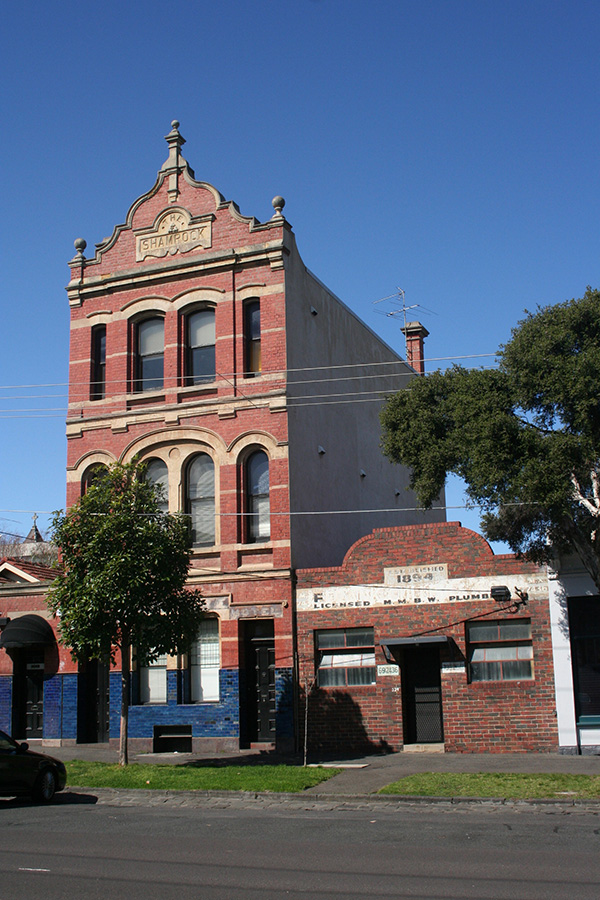
The Shamrock and Frank Cullen Plumber, Bank Street
Beside the Shamrock is a smaller building, once occupied by a plumber by the name of Frank Cullen. His name is faintly visible in white lettering, and for some reason the ‘F’ alone is visible in black. The business was established in 1894, so says the sign, but Cullen was still here in 1946, according to my Sands & McDougall directory. He was licensed by M.M.B.W., the Melbourne Metropolitan Board of Works, which was responsible for the city’s water and sanitation from 1891 onwards. Cullen’s phone number was MX2436.
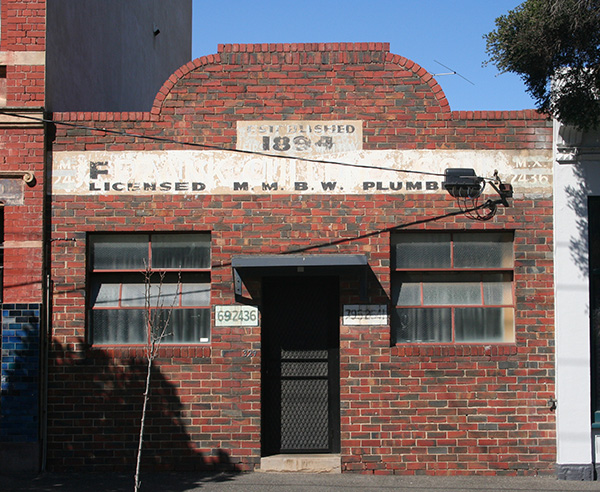
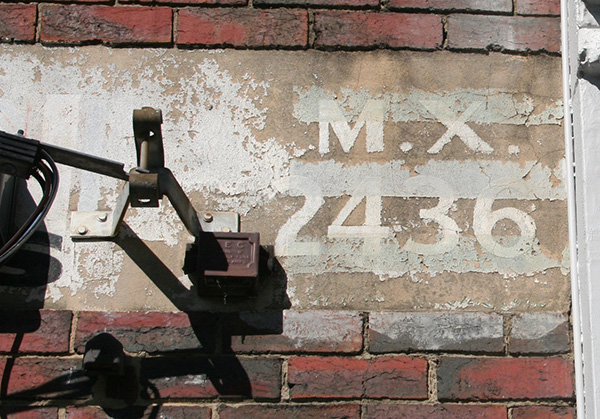
Frank Cullen’s phone number.
Look up at the eastern wall of the Shamrock and you see two layers of ghostsigns – a combination of Carlton Ales on the top and an older Velvet Soap sign below. Some of my favourite ghostsigns in Melbourne are the ones where layers are superimposed in this way, as paint gradually weathers and earlier traces are exposed. Velvet Soap signs are still visible in many Melbourne suburbs – they had a very active advertising department – and the product was manufactured by J. Kitchen & Sons, a firm based nearby in Ingles Street, Port Melbourne. The lettering across the top appears to read ‘Shannon Shamrock Hotel’ which was the hotel’s full name.
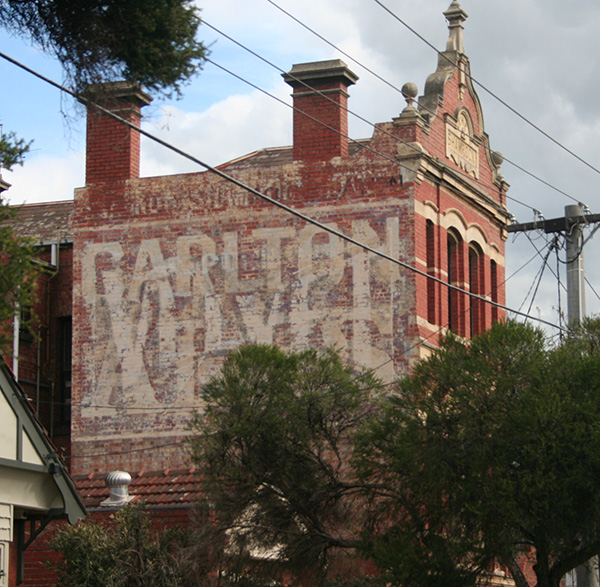
What are these soap suds doing in my beer? Velvet Soap and Carlton Ale ghostsigns
We continued east along Bank Street, passing Victorian terraces, more solid red brick Victorian buildings, and Housing Commission flats on our right. Reaching the corner of Cecil and Bank streets we came to a Victorian corner shop with quaint old signage. The words ‘Hall (something?) Corner’ are visible at first floor level.
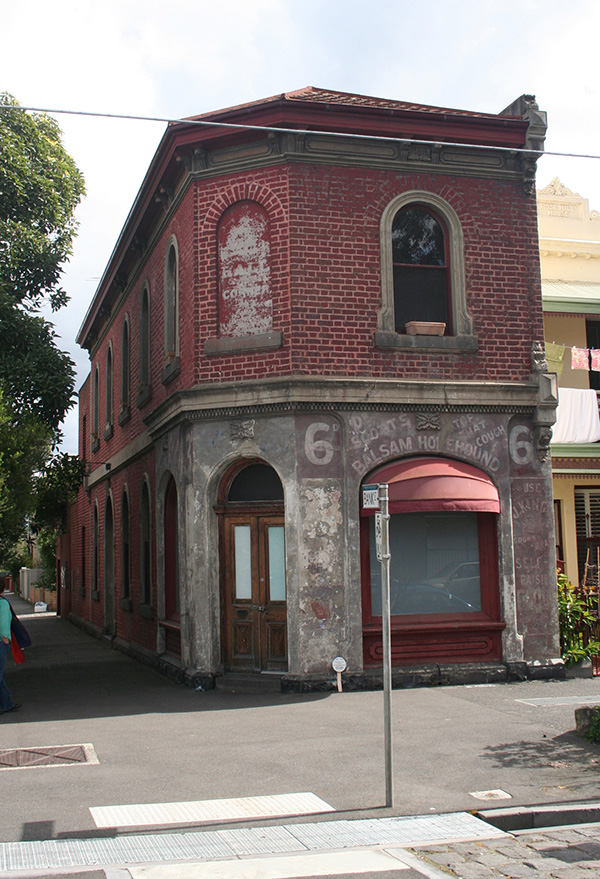
This building is a South Melbourne landmark, often used for photography – in fact a wedding party turned up while we were admiring it. The wall has weathered to an attractive and regal faded purple.
Advertising for Dr Scott’s Balsam Horehound – a product I have never heard of elsewhere – curves elegantly around the window, and on the side wall there is a sign for Marchall’s Rhubarb Pills for the liver, which might have been useful if you’d over-indulged at the Shamrock Hotel. There is also an advertisement for J.J. King’s self raising flour, so this may have been a general store rather than, or as well as, a pharmacy. The prices – three pence (3d) and six pence (6d) are prominently displayed. Given the age of the building, the products advertised and the style of the signwriting, it seems reasonable that these signs could be from the 1880s or 1890s.
Dr Scott’s Balsam Horehound is another addition to my collection of lost doctors and medicines whose names appear on Melbourne walls. In North Carlton, for example, I came across a ghostsign for Otis Tonic Tablets on the rear wall of an old pharmacy; in North Melbourne and Abbotsford I’ve seen signs for Dr Morse’s Indian Root Pills; in Russell Street I saw the old advertisement for ‘the celebrated specialist Dr King‘, a medical clairvoyant. In fact there are many relics of former Melburnians’ medical options still preserved on our walls.
Horehound is a plant in the mint family, said to be effective as a cough remedy – hence the ‘Stop that cough’ slogan. You can find recipes for your own horehound cough drops online, as you can find old (empty) bottles with Dr Scott’s name on.
A little further along, right opposite the Town Hall, we passed the 1928 court house, which is unusual for being built in the Spanish Mission style. That seems quite an exotic architectural choice for a public building in this setting, and makes it stand out from the buildings around. In the 1920s, various international architectural styles were being imported to Melbourne, but Spanish Mission was more commonly seen in houses and commercial settings – like the former Brunswick Market – than courts. It makes you feel for a moment that you have been transported to California.

South Melbourne court house
A little further along Bank Street is another relic of Victoriana: a two-storey brick building at 202 Bank Street, now an op shop, but originally built for estate agent David Boyd, whose name can be seen at the top. There is signage with the words Town Hall Chambers, and Myers and Company have also left their traces on the facade.
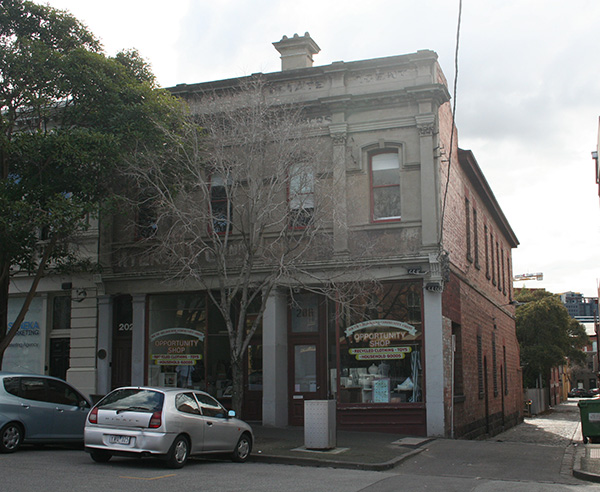
202 Bank Street
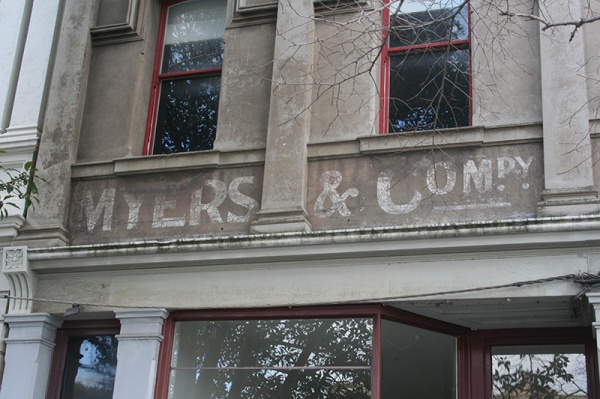
My favourite of the ghostsigns on this building is on the side wall, and reads ‘Fire Assurance, Weekly or Quarterly Payments’. Insurance advertisements were often found on the walls or windows of real estate agents – I’ve seen a few examples on this walk. Presumably people could be sold the insurance at the same time as they invested in property.
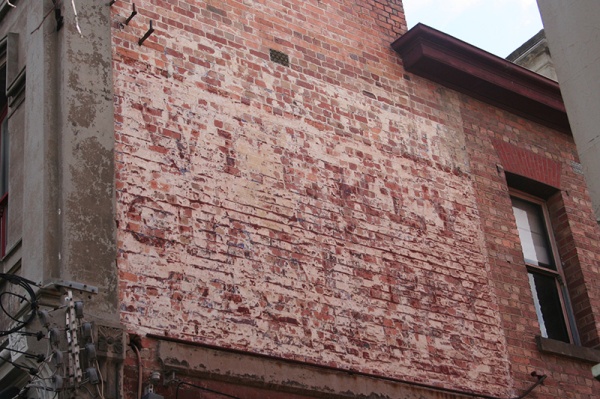
Fire assurance advertisement, around 1900 or even earlier?
Here’s the entry from Sands & McDougall street directory for this part of Bank Street in 1900. The street numbers were different back then, and this building was number 25. As we see, David Boyd was in occupation. Nearby were other small businesses: a tailor, a watchmaker, a photographer and a ‘feather dresser’.
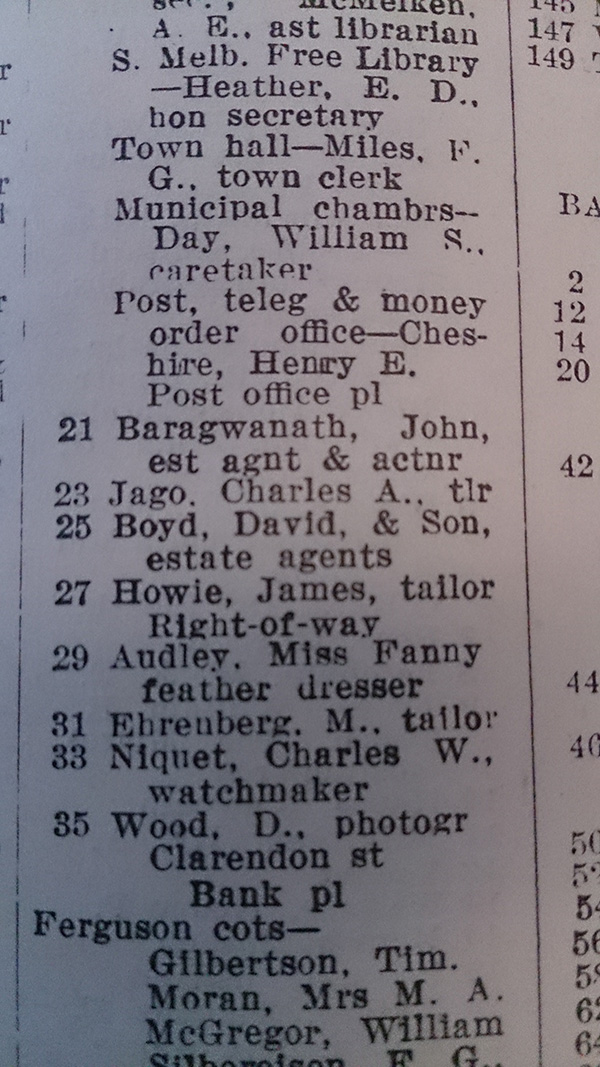
Source: Sands & McDougall 1900
Who was Miss Fanny Audley at 29, the ‘feather dresser’? I like to think of this delightful occupation as being something like a burlesque dancer, and imagine her causing a scandal among the respectable estate agents, town hall clerks and judges of this part of town. Actually, though, a feather dresser was someone who cleaned and prepared feathers for sale – I suppose for hats and the like. Boringly respectable. This part of South Melbourne, close to the Town Hall, must have been quite well-heeled (and well hatted).
Continuing along Bank Street and heading across Clarendon Street we enter the 20th century, and pass a 1930s art deco building with lovely cement lettering: Melbourne Butter Supply Pty Ltd.
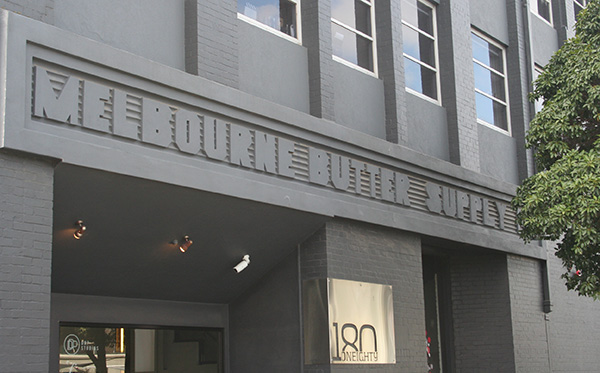
Deco lettering on the Melbourne Butter Supply building
The supply of dairy products to the city was highly regulated in the 1930s. In the 1910s and 1920s there had been outbreaks of disease – tuberculosis, typhoid fever, diphtheria, scarlet fever could all be spread by contaminated milk – so the Milk Board Act in the 1930s created a board to regulate supplies, rather than leaving it up to small private dairies. The Melbourne Butter Supply Pty Ltd is described in Sands & McDougall 1946 as ‘dairy produce merchants’. It has been many years since butter was produced here, but you can still enjoy the chunky 3-D signage, which almost looks as if it has been carved out of cold butter.
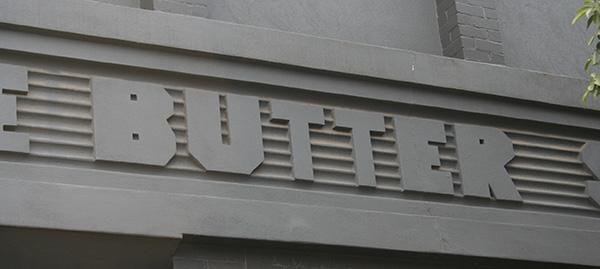
At this end of Bank Street there is an interesting mix of domestic architecture, including this old bluestone place.
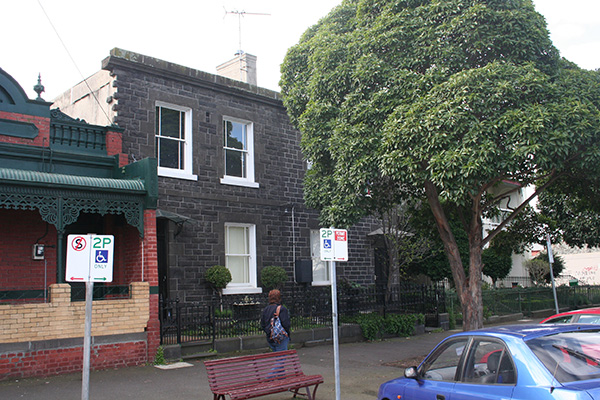
Bluestone house, Bank Street
And we finished this short walk along Bank Street with a stylish bit of art deco on the Town Hall Hotel near Moray Street.
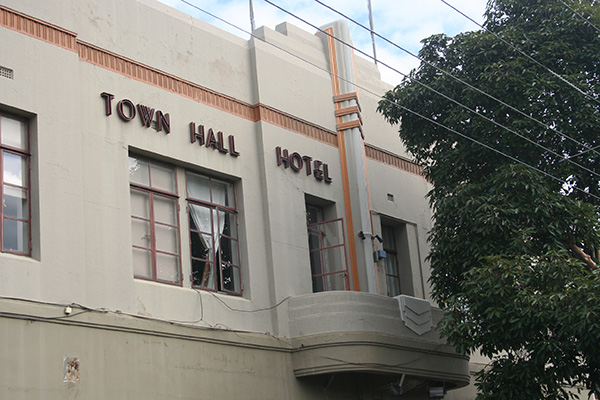
Deco stylings on the Town Hall Hotel
*
Port Philip ghostsign conservation project
eMelbourne entry: The Irish in Melbourne
eMelbourne entry: Dairying and milk in Melbourne
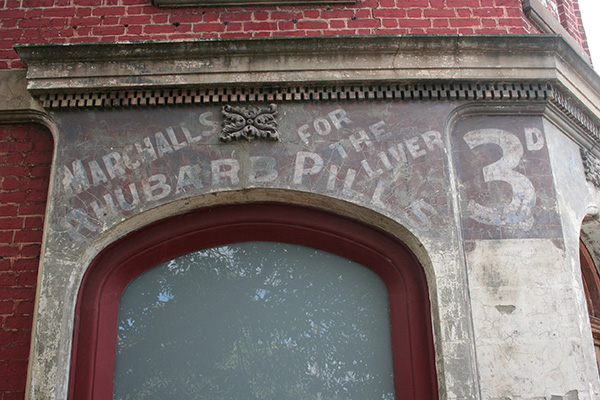




In the 1950’s to the 1970’s my nanna worked at Marshall’s Chemical Co.Ltd. at Heidelberg Rd, Alphington, Victoria, There they made Dr Scott’s Balsam of Horehound, along with all “Old Spice” for men & “ Desert Flower “ for women.